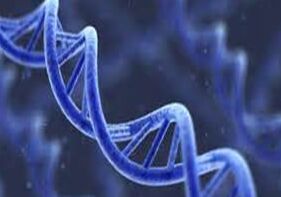中国科学家基因编辑治疗艾滋病 向"治愈"又迈出一步
|
The 27-year-old patient's prospects were bleak. In May 2016, he found out he had AIDS. Two weeks later, he was told he had acute lymphoblastic leukemia. But doctors offered the Chinese citizen a ray of hope: a bone marrow transplant to treat his cancer and an extra experimental treatment to try to rid his system of HIV, according to a new paper published in The New England Journal of Medicine. This involved using the gene editing tool CRISPR-Cas9 to delete a gene known as CCR5 from bone marrow stem cells taken from a donor, before transplanting them into the patient, Peking University scientists said in the study.
"After being edited, the cells -- and the blood cells they produce -- have the ability to resist HIV infection," lead scientist Deng Hongkui told cnn Friday. People who carry defective copies of CCR5 are highly immune to HIV, because the virus uses a protein made by this gene to gain entry into an infected person's cells. Two men, known as the Berlin patient and the London patient, became the first people in the world to be cured of HIV after receiving bone marrow transplants from donors who had the mutation naturally. The patient agreed and the experiment was carried out in the summer of 2017. It was the first time CRISPR-Cas9 was used on a HIV patient. In early 2019, a full 19 months after the treatment was administered, "the acute lymphoblastic leukemia was in complete remission and donor cells carrying the ablated CCR5 persisted," the scientists said in the paper. But there weren't enough of them to eradicate the HIV virus in the patient's body. After transplantation, only approximately 5% to 8% of the patient's bone marrow cells carried the CCR5 edit, according to the researchers. "In the future, further improving the efficiency of gene-editing and optimizing the transplantation procedure should accelerate the transition to clinical applications," said Deng. But he doesn't see this as a setback."The main purpose of the study was to evaluate the safety and feasibility of genetically-edited stem cell transplantation for AIDS treatment," said Deng. According to Deng, this was a success: the scientists didn't detect any gene editing-related adverse events, even if "more long-term in-depth studies are needed for off-target effects and other safety assessments," Deng said. The CCR5 gene mutation has been associated with a 21% increased risk of dying early, according to a paper published in Nature in June, though it's unclear why. The team that conducted the study had previously transplanted edited CCR5 human cells into mice, making them resistant to HIV. American scientists have carried out similar experiments on humans, with some success, using an older gene editing tool called zinc finger nuclease. China has invested heavily in gene-editing technology, making biotech one the priorities of its Five-Year Plan announced in 2016. The central government has bankrolled research into a number of world "firsts," including the first use of the gene-editing tool CRISPR-Cas9 in humans in 2016 and the first reported use of gene editing technology to modify nonviable human embryos in 2015. Deng Hongkui remains a strong believer in CRISPR-Cas9. He thinks it could "bring a new dawn" to blood-related diseases such as AIDS, sickle anemia, hemophilia and beta thalassemia and that, thanks to this new technology, "the goal of a functional cure for AIDS is getting closer and closer." |









